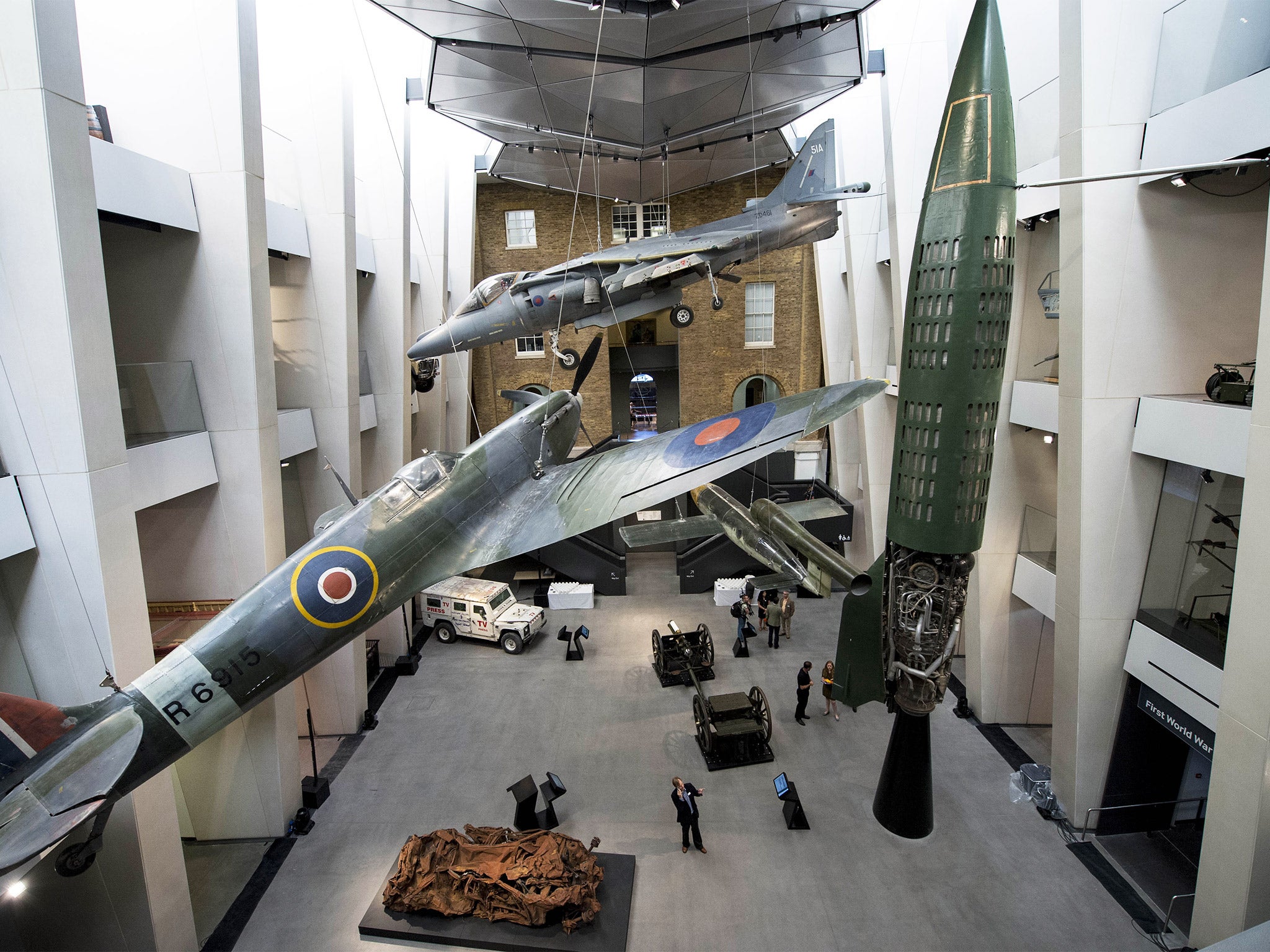Imperial War Museum's flagship site to reopen this weekend after first stage of its £40m redevelopment project is completed
It was timed to reopen with the commemorations that form part of the centenary of the First World War

Your support helps us to tell the story
From reproductive rights to climate change to Big Tech, The Independent is on the ground when the story is developing. Whether it's investigating the financials of Elon Musk's pro-Trump PAC or producing our latest documentary, 'The A Word', which shines a light on the American women fighting for reproductive rights, we know how important it is to parse out the facts from the messaging.
At such a critical moment in US history, we need reporters on the ground. Your donation allows us to keep sending journalists to speak to both sides of the story.
The Independent is trusted by Americans across the entire political spectrum. And unlike many other quality news outlets, we choose not to lock Americans out of our reporting and analysis with paywalls. We believe quality journalism should be available to everyone, paid for by those who can afford it.
Your support makes all the difference.The flagship site of the five Imperial War Museums is to reopen on Saturday after its biggest overhaul in a quarter of a century with an atrium that “no longer looks like a car park”.
The entrance with its iconic war planes and tanks from conflicts spanning the 20 century had become so cluttered, according to the director, “that the museum had become harder and harder to understand, so we’ve thinned it out”.
IWM London has completed the first phase of its redevelopment plan, a £40 million project by architects Foster and Partners to redesign the atrium and tackle the First World War Galleries.
It could not extend the building, as the park is property of Southwark Council, so the architects had to reconfigure the space. The building was closed to the public for six months.
Diane Lees, the museum’s first female director when she was appointed in 2008, said starting the project “took four years, but it felt a lot longer”.
When she joined a building designed for 700,000 visitors a year was receiving 1.1 million and “was creaking at the seams”.
The much-loved vehicles including Sopwith Camel, the British Mark V tank and the Spitfire remain, but their positioning been reconfigured.
Nine objects are now in the atrium such as a Harrier jet, a V-1 rocket and Reuters Land Rover damaged in an attack in Gaza. The Spitfire, one of the IWM’s most popular objects, also remains.
Ms Lees said: “It’s probably the iconic non-flying Spitfire that exists. It tells a hugely important human story. It had six pilots that we know of and has flown in some of the most important battles.”
New items are regularly donated and one of the most recent is a kitbag found in an attic issued by the British to a German prisoner of war in Iraq during the Second World War. “They’re as rare as hens’ teeth. That stuff is still out there,” Ms Lees said.
It was timed to reopen with the commemorations that form part of the centenary of the First World War and the director describes the new design as “cathedral like and strong”.
The newly configured Great War galleries have 1,300 objects on display. It also includes an overhauled “trench experience” that has gone from using a “plasticky” set with mannequins dressed up to using new technology that can show what life was like at the front.
The Imperial War Museum was set up in 1917 – then called the National War Museum – shortly after the horrors of the Battle of the Somme, to chronicle the war “to end all wars”. Its job, according to Ms Lees is to “explain how wars happen, what we call the ‘three Cs’: Cause, Couse and Consequence”.
The museum moved to the site on Lambeth Road in 1936 and the remit was extended before becoming open-ended to cover ongoing conflicts.
Ms Lees said: “Current soldiers, navy and airmen complain that they’re portrayed as heroes or victims but our job is to say these are ordinary people doing extraordinary things. That’s given us a whole new platform in terms of working with contemporary conflict.
“It suits the museum; it’s still our founding mission. We’ve gone back onto the battlefield. With Afghanistan we have 1,200 families talking about their experience of war as it happens. So in a hundred years our remit has come back and become totally relevant.”
The next phases of the museum’s regeneration will include taking the staircase out of the atrium, as well as moving the Holocaust Gallery and redeveloping the Second World War galleries ahead of the anniversary in 2025.
Join our commenting forum
Join thought-provoking conversations, follow other Independent readers and see their replies
Comments